AZZA Genesis 9000 Full Tower PC Case Review
Genesis 9000 Interior Thoughts
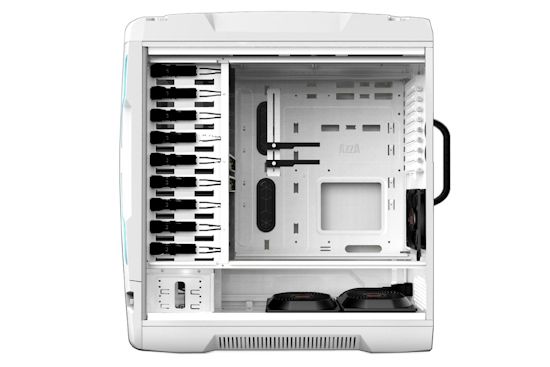
Since I did the external overview of the Genesis 9000 chassis, it is time for me to turn our attention over to the internal portion of this chassis.
I have a few personal thoughts on the reversed motherboard orientation capabilities of the Genesis 9000 full tower chassis. Myself, I personally have always preferred having my motherboards in the reversed positions, because on average it has been giving me a little better cooling efficiency and heat manageability of my computer components. By having this type of motherboard configuration, it allows the hottest part of our computer component, the CPU, access to better and more airflow than having it toward the top of the chassis. Also, it places the video cards up toward the top of the chassis, which is the second hottest computer component we have. By doing this it allows the excess heat that is produced by the VGA cards to exit the chassis a lot faster. But, this is greatly determined on the type(s) of heatsinks that are being used on our VGA cards and if we are using a side panel fan. Your mileage may vary — what works for me may not always work best for you. The Genesis 9000 full tower chassis from AZZA gives us computer users the option of either placing the motherboard in the traditional ATX layout, or we can use the reversed configuration to suit our personal needs.
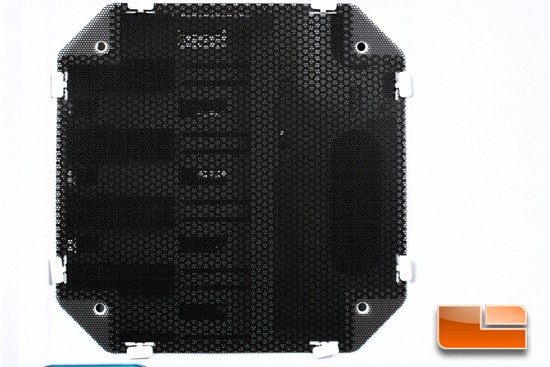
I am going to start the internal overview on the right side panel. As I stated earlier AZZA does include a fan filter for the 230mm optional fan on the right side panel; unfortunately, we cannot remove it as it is glued/taped into place.
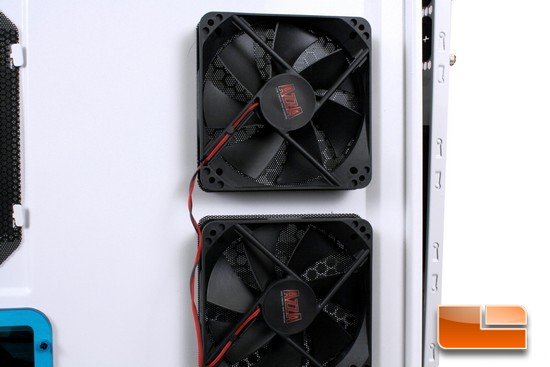
Up toward the front of the ride side panel, AZZA includes 2 120mm fans that are used as intakes. These fans also have fan filters that are glued/taped directly to the right side panel.
Again, I would have liked to have seen these fan filters (230/120mm fans) removable so that we can service them easier if and when it is required.
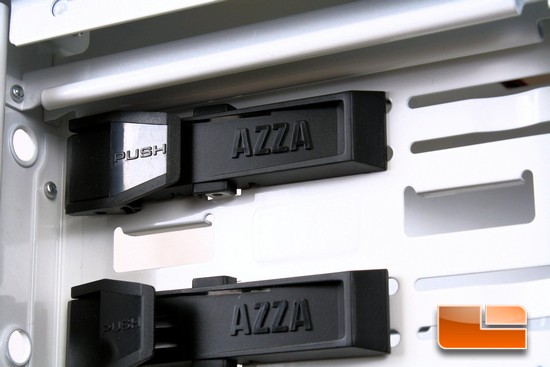
Every one of the 5.25 bays utilizes tool-less locks; these locks are fairly easy to operate, just push on the back side of the little switch, slide in the drive/bay device and then allow these locks to secure the drive/device into place.
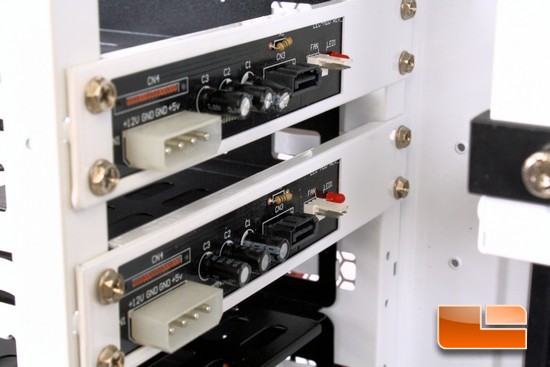
The Genesis 9000 chassis gives us users the capability of having hot-swappable SATA drives. What we are looking at now is what gives us this capability. AZZA places a 4 pin molex onto each of the hot-swappable interfaces, along with a red LED that will light up once a drive is placed here, as well as a 3 pin fan header.
You can remove these from the chassis and place these on any one of the available 9 5.25 bays, or we can remove them from the chassis completely.
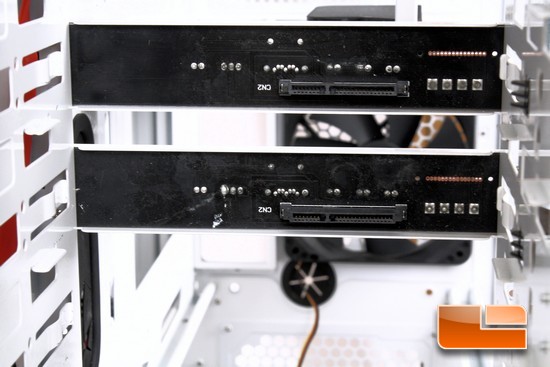
This is looking at the front side of the SATA hot-swappable drive interfaces.
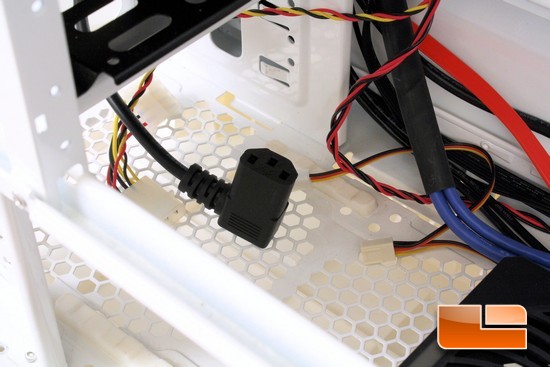
AZZA includes a PSU power cable extension for if we wish to run the PSU up front, or if we choose to mount a single forward facing PSU.
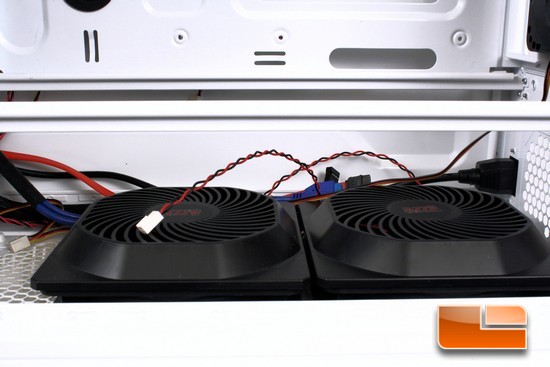
Looking at the bottom of the interior of the Genesis 9000 chassis, AZZA includes 2 140mm intake fans.
If you wish to use a rear facing PSU with this chassis, both of these fans have to be removed. But, you can still move these fans forward if you wish to keep using them. If you choose to use 2 PSUs in this chassis you will not be able to use these fans at all.
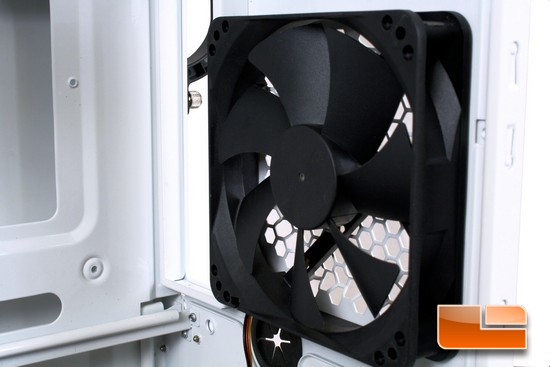
Looking at the included rear 120mm exhaust fan.
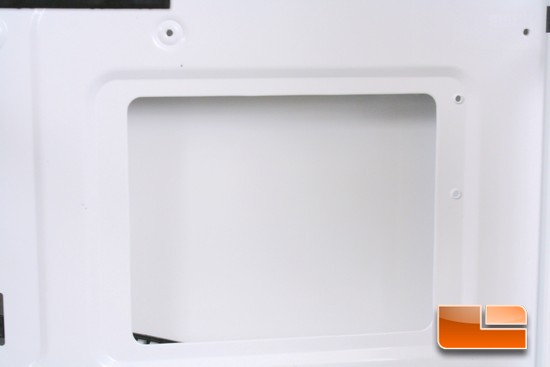
The CPU cut out does appear to be rather small in size; we will have to look at this more closely once I get my computer components installed.
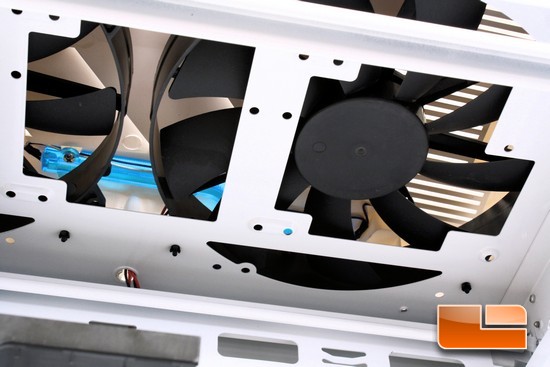
This is looking up at the top rear 230mm exhaust fan.
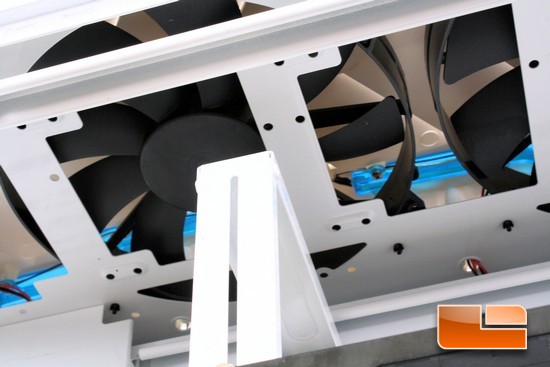
Here we are looking at the included top forward 230mm exhaust fan.
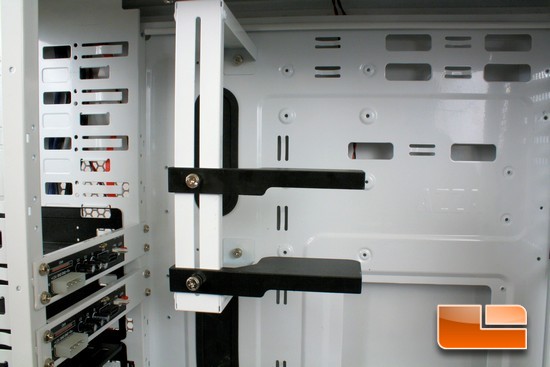
The Genesis 9000 chassis uses 2 video card supports. The sole purpose of these supports is that when we use large heavy video card coolers on our video cards, it will keep them from getting bent and helps relieve any stresses placed on the motherboard’s VGA socket. We can remove these video card supports to make installation of our computer components easier, or not use them at all.
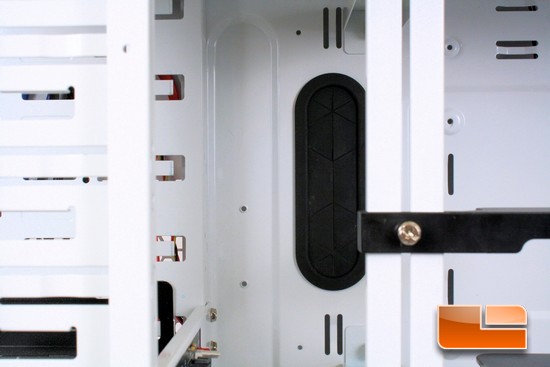
AZZA places large PSU wire cutouts into the motherboard tray so that we can hide our PSU wires behind the motherboard tray and still hook them up to the motherboard. Also, if we are using an EATX sized motherboard, we can move the video card supports back to clear the motherboards increased length.
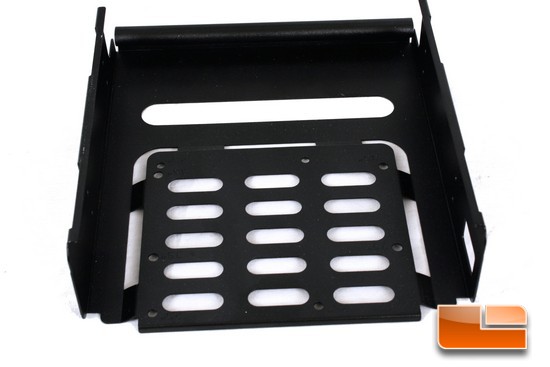
Here is the 5.25 HDD carrier; we can mount either a 3.5/2.5 HDD/SSDs into these drive carriers.
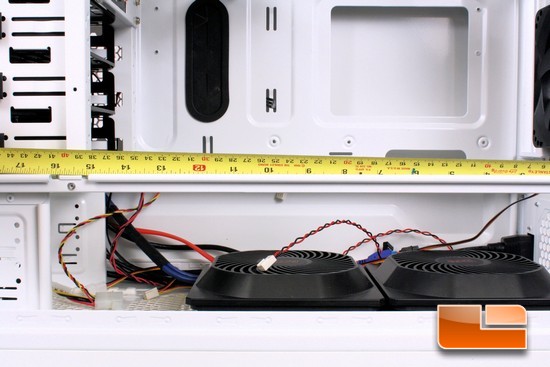
Talk about having a lot of room inside of a chassis, this measurement from the back of the chassis to the front of the 5.25 cage is right at 15 of total length.
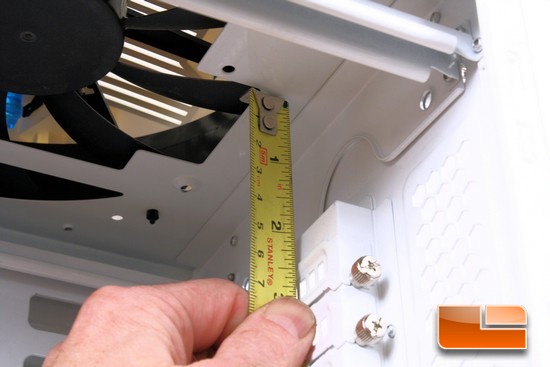
The Genesis 9000 chassis can mount a quad 120mm radiator up at the top of the chassis (480mm radiator). But, the rear mounting holes are directly above/below, depending on the orientation of the motherboard and the PCI expansion ports. So the thickness of the radiator is determined by the amount of room we are giving here, which is only two inches.
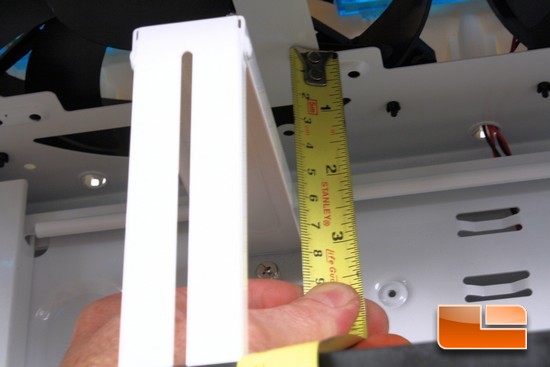
If you plan on using a radiator and the video card support you will also be limited by roughly 2 from the top of the support brace to the top of the chassis.
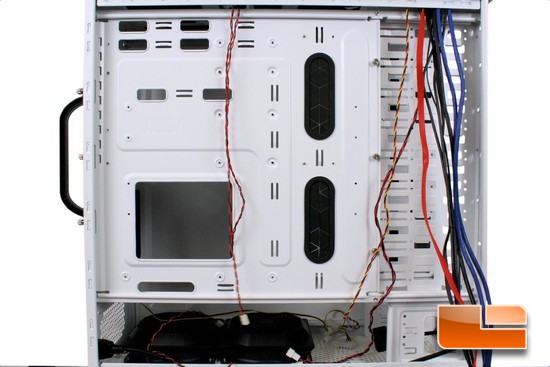
This is looking at the backside of the motherboard tray area on the Genesis 9000 chassis.
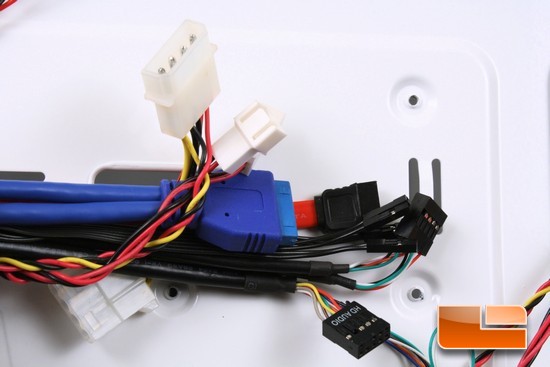
Here are the front IO motherboard headers for the Genesis 9000 chassis: we get a USB 3 motherboard header, a USB 2 motherboard header, an e-SATA to SATA cable, front audio motherboard headers, then finally a molex connector that will be needed to provide power for the included fans and LED trim lights.
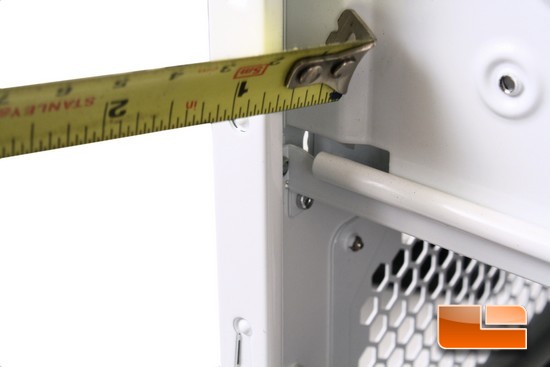
Directly behind the motherboard tray is roughly 7/8 of room, which should be plenty of room to hide/route our PSU wires here.
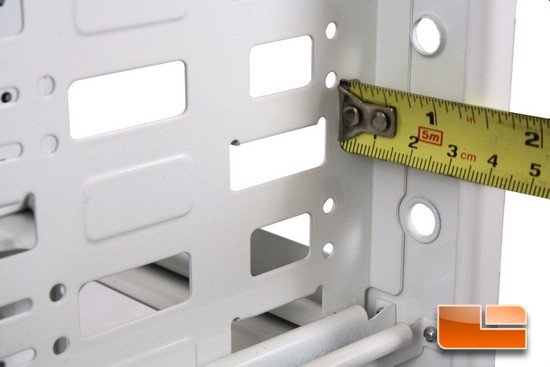
On the left side 5.25 bay cage there is 1.5 of room here. We can mount either the optional 120mm fans on the left side panel, or route extra PSU power cables here.
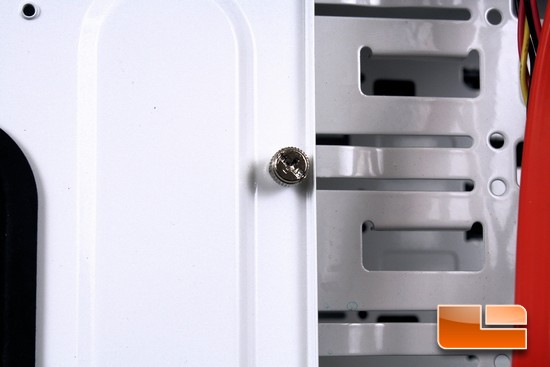
The motherboard tray on the Genesis 9000 chassis is reversible, so if we want the more traditional ATX chassis layout we need to unscrew the 3 thumbscrews on the front of the motherboard and the 6 on the backside external motherboard tray.
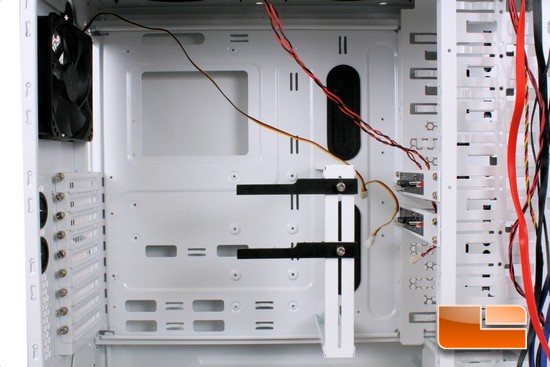
Slide out the motherboard tray, then slide it back into the opposite side rail; then secure the motherboard back onto the main frame of the Genesis 9000 chassis.
Rounding out the Genesis 9000 internal overview, I will like to add that AZZA did a great job on ensuring that this chassis is solidly built. And, that all of the corners/edges of the chassis are rounded enough to keep us from cutting our hands, arms, and fingers as we make our way around the chassis.

Comments are closed.